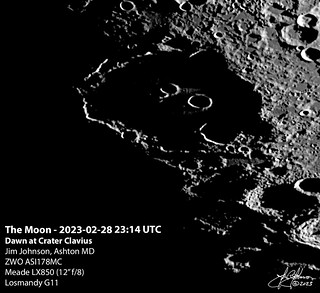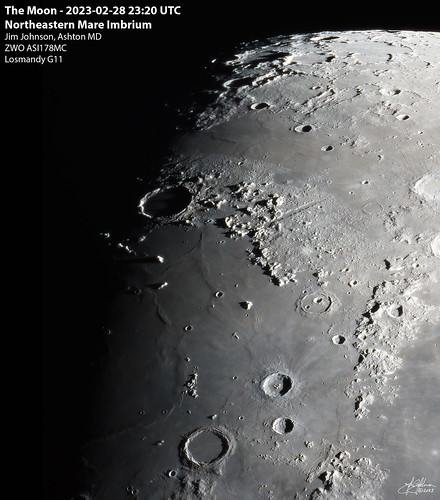My objectives for this session were to do some lunar captures using planetary techniques, and then to start working on getting the Meade prepped for DSO imaging. The lunar effort went very well, but the DSO effort did not work out at all. In short, DSO imaging at SCT focal lengths seems very hard at the moment, so I am going to do some reading and devote a couple more bright lunar night sessions before giving it up.
The lunar setup was G11/LX850/ASI178MC with no PowerMate. For the DSO work, I removed the ASI178 and replaced it with the ASI6200.
The temperature was 52 degrees at session start, and the forecast was for moderate humidity. The temperature had dropped to 45 degrees by the time I ended the session at 2040. There was no discernable dew on any surface. The Astrospheric forecast was for above average transparency and below average seeing. The lunar image in the display looked better than forecast.
The lunar imaging went well, and there were no problems.
The DSO session started well. I was able to get a NINA profile set up for the Meade without any difficulty. All accessory devices connected without a problem. I follow this with cofocusing the main and guide cameras which occurred without a problem.
I got stuck at calibration. I had difficulty maintaining a guide star, probably because of focus. It seems that when large turns of the focus knob were required to have any effect at all, and I could not get the FWHM below 7, and the stars never did look sharp. I believe that these effects are caused by the long SCT focal length.






